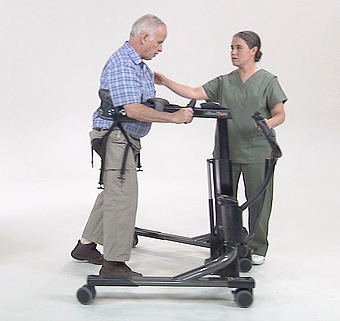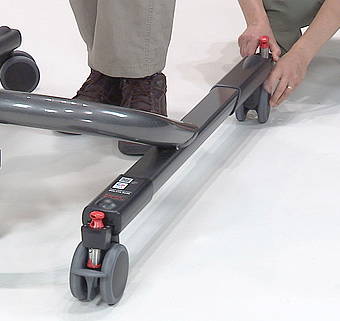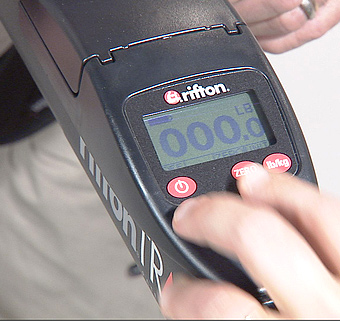Using the Forearm Supports
Rifton TRAM video 3
The Rifton TRAM combines three powerful functions in a single, compact, ultralight device: seated transfer, sit-to-stand lift, and gait training. This short clip shows how you can use the TRAM’s forearm supports to improve the transfer experience and give your client positioning support to improve gait posture.
Watch more videos in this series:
Rifton TRAM video 1: The Seated Transfer
Rifton TRAM video 2: The Sit-to-Stand Lift and Gait Training
Rifton TRAM video 3: Using the Forearm Supports
Rifton TRAM video 4: Using the Swivel Locks
Rifton TRAM video 5: Using the Scale for Weighing and Off-weighting
Narrator: The TRAM’s optional forearm supports can be used to provide additional support during seated transfers and sit-to-stand lifts, and for positioning during ambulation.
If your client needs additional trunk stability or support during a seated transfer, the forearm supports can make a big difference. You’ll find it helpful to position the elbows directly below the shoulders.
Visual: Caregiver placing forearm supports on the body support system and placing the client’s arms in them. As the caregiver proceeds with the lift, the client’s elbows are positioned directly under his shoulders.
Narrator: For gait training, some clients can achieve better posture if their arms are positioned in the forearm supports.
Visual: Gait training with forearm supports installed in forward leaning position.
Narrator: The forearm supports are highly adjustable to accommodate different positioning requirements.
Height can be adjusted by pressing the release button and sliding the mounting bar up or down.
Visual: Height adjustment of the mounting bar is demonstrated.
Narrator: The mounting bar can be placed in several positions depending on your client’s needs, either up and forward or down and back. Note that you can also switch sides to gain even more adjustment range. Experiment with the positioning of the mounting bar to find what’s best for your client.
Visual: The mounting bar is placed in several different positions.
Narrator: To adjust the position of the forearm prompts on the mounting bar, loosen the knob underneath.
Visual: All adjustments of the forearm supports are demonstrated: angle, forward and back.
Narrator: The Rifton TRAM. Award-winning design to help you lift, transfer, and ambulate your clients safely.
Visual: Caregiver hanging MDEA tag on handlebar.



